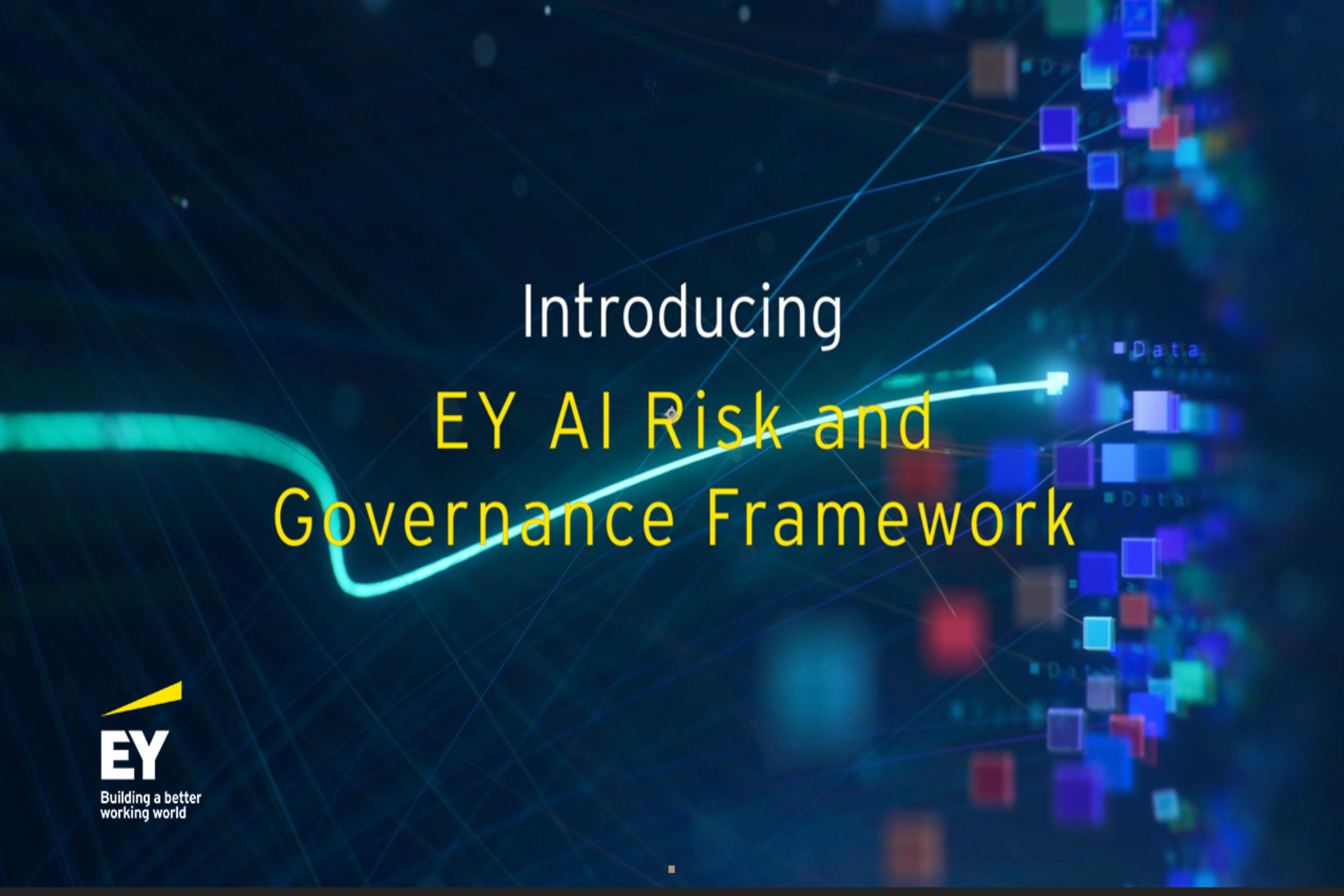EY refers to the global organization, and may refer to one or more, of the member firms of Ernst & Young Global Limited, each of which is a separate legal entity. Ernst & Young Global Limited, a UK company limited by guarantee, does not provide services to clients.
EY.ai | AI Insights | AI Technology | AI Ecosystem | AI & Careers | Contact us
AI Insights
Explore our global insights that look at how you can build confidence in AI, drive exponential value throughout your organization and deliver positive human impact.
Our latest thinking
AI at the helm; understanding marketing’s next frontier
Discover generative AI's transformative role in marketing, enhancing creativity and revolutionizing customer service in our latest podcast.
AI uncovered - Part 2: Decoding tax data: AI's transformative impact
Explore 'GenAI in Tax – The next wave' in our podcast, where EY leaders delve into AI's transformative effects on tax data management and planning.
How is generative AI transforming HR for CHROs
Explore AI's transformative role in HR with EY.ai's podcast. Learn how GenAI boosts productivity, enhances decision-making, and shapes future HR leadership.
Identifying AI generated content in the digital age: the role of watermarking
Explore the future of AI content and the critical role of digital watermarking in protecting creators' rights and ensuring content authenticity.
Tech Trend: transforming sectors with industry clouds
Explore industry cloud platforms with Abhinav Johri on Tech Trends 2024 to boost business efficiency and gain insights into their transformative impact.
Tech Trend: Future of work: revolutionizing the next-gen employee experience
In the third episode of our Tech Trends series for this year, we explore the concept of Future of work: revolutionizing the next-gen employee experience. Ajay Gachhi, Partner, Technology Consulting, EY India, joins us in discussing the risks and benefits of AI advancements, and why building trust is important. He also sheds light on the transition from traditional AI to Gen AI, the significance of risk-based regulation, the value of human-centered design, and the role of technology in ensuring reliable AI outputs.
AI uncovered – Part 1: summarization and legal insights in tax with AI
Explore 'GenAI in Tax: The Next Wave' podcast for insights on how Generative AI is revolutionizing tax compliance and strategy with EY partners
Insurance for All: enhancing insurance coverage across India
India's insurance growth: Innovating with micro-agents, AI underwriting, digital platforms, and regulatory support for universal coverage.
Tech Trend: enhancing software development with GenAI
In the second episode of our Tech Trends 2024 series, we dive deep into the transformative potential of Artificial Intelligence (AI) augmented software development.
Tech Trend: Responsible AI: mitigating risks and building trust
Explore Responsible AI in Tech Trends with Kartik Shinde. Uncover AI risks, benefits, and trust in technology's evolution.
AI revolution: transforming the Tax landscape
Rahul Patni & Divyesh Lapsiwala discuss GenAI's future in tax, its role in enhancing productivity, and evolving tax professions. Tune in now!
Transforming healthcare in India with Generative AI
Leverage GenAI in Indian healthcare: a collaborative strategy for high-quality, accessible care, balancing potential with mindful tech integration. Learn more.
Is Generative AI beginning to deliver on its promise in India? AIdea of India update
Stay ahead in the digital race with the latest edition of 'AIdea of India.' See how Generative AI is fulfilling its potential across various sectors in India.
Tech Trend 06: Unleashing next-gen employee experience with digital and AI
Discover how AI is revolutionizing the workplace with EY's insights on next-gen employee experiences. Learn strategies to enhance engagement & productivity in our Tech Trend 06 update.
Tech Trend 05: Responsible AI: Building a sustainable framework
Explore the concept of Responsible AI and discover how to build a sustainable framework for ethical and impactful AI development. Learn more about tech trends 2024.
Tech Trend 04: Digital twins: Creating intelligent industries
Discover how Digital twins will redefine industries but require meticulous implementation. Learn more.
Join us at the EY GCC GenAI Conclave 2024 to hear from industry experts on flagship event for GCC leaders of leading organizations across India, focussed on trends and topics concerning today’s GCCs.
Embracing the future: GCCs spearheading innovation with new-age services
Discover how GCCs are diversifying their suite of offerings by adding new-age services to their service portfolio.
Tech Trend 01: AI-augmented software development: A new era of efficiency and innovation
Elevate software development with AI-augmented expertise. Unleash innovation through machine learning integration. Transform projects for optimal results.
How GenAI governance framework can help build trust in tomorrow’s tech
Discover how organizations employing Generative AI take on self-regulation amid the current absence of guidelines. Learn more
How EY can help
-
EYP Strategy and Transactions AI offerings portfolio including AI Maturity and Readiness (using AI Readiness Index), AI Strategy Operating Model, AI Value Creation (using AI Value Accelerator), and AI Capability Due Diligence are designed to help organisations effectively choose, assess, integrate, and scale AI into the existing business operations.
Read more -
Our Consulting approach to the adoption of AI and intelligent automation is human-centered, pragmatic, outcomes-focused and ethical.
Read more -
Discover how EY's technology transformation team can help your business fully align technology to your overall purpose and business objectives.
Read more -
Discover how EY's digital transformation teams can help your business evolve quickly to seize opportunities and mitigate risks. Find out more.
Read more -
EY ASpace is one-stop platform to help enterprises embed & scale AI across the organization & accelerate their digital transformation journey & customer engagement.
Read more























